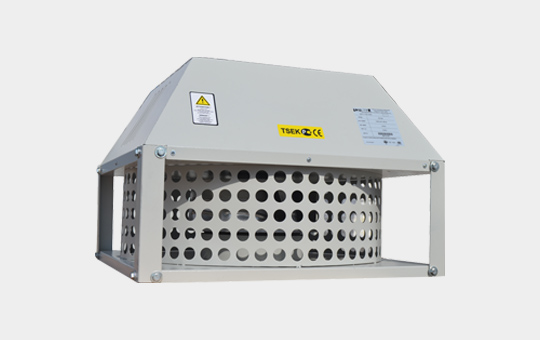Roof type fans are used as aspirators by connecting air ducts or directly mounted. In roof type fans, the fan impeller is mounted directly to the motor shaft. The motion energy generated in the electric motor is transmitted to the propeller without loss. Roof fans are manufactured in two different types as horizontal and vertical blow. It is also used in hood suction systems due to the fact that the fans have sparse blades and the possibility of the electric motor apart from the air flow. It is used in light to medium density particle transfer.
Roof Type Fan
Where to Use Rooftop Fans
Roof fans are used for pressurizing stairs and elevators in factory areas without an air duct connection. In logistics centers where textile, electronics and foodstuffs are stored, fast and economical ventilation is performed.
It is used in WC, office, warehouse, shop, kitchen and hood suction systems by connecting air ducts. In collective housing projects, a more efficient aspiration process is achieved by installing the central ventilation ducts at the top point.
Advantages of Roof Type Fans
Roof type fans are manufactured in a very compact structure. They are sought after devices in terms of space saving. Especially the vertical throw roof fans ensure that the odor-laden exhaust air is conveyed to higher levels. It works highly efficiently thanks to the coupled fan system without the belt and pulley system. It is easily used in places of use where hot air is transferred. The fact that the electric motor is out of the air flow is not affected by external conditions.
General Features of Roof Type Fans
Roof type fans are generally manufactured using static painted sheets over galvanized. Fan impellers are used with backward curved blades. Electric motors are powered by 220 and 380 volts. Body heat is removed from the engine thanks to the internal cooling wheel. Fans are manufactured with horizontal and vertical air discharge. Electric motors in both vertical and horizontal blow fans are located in a specially protected section.

